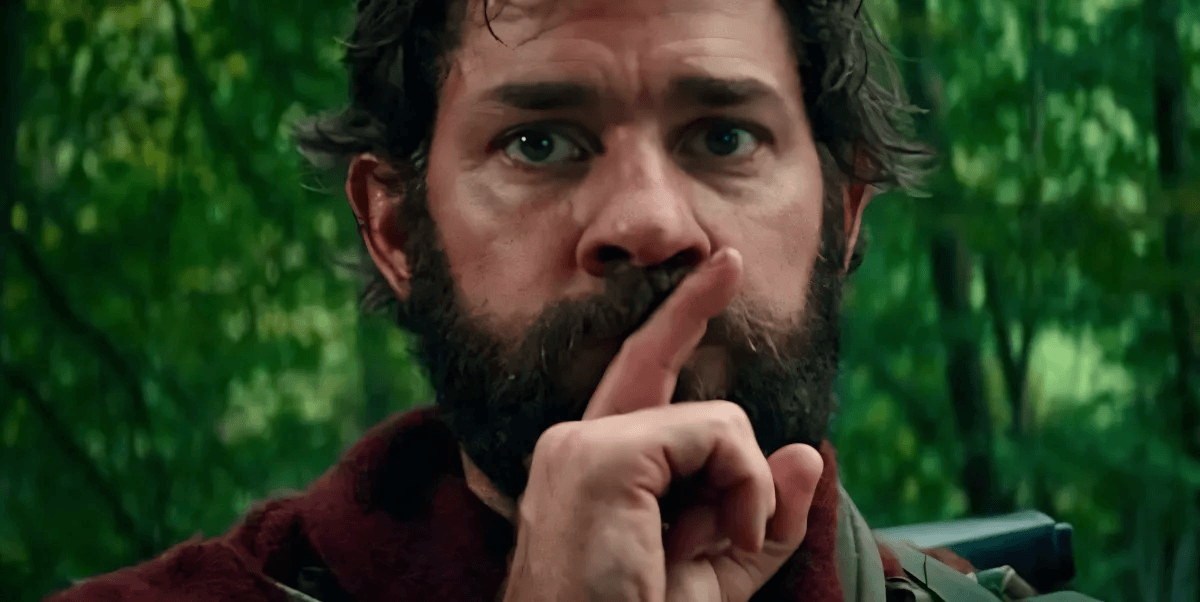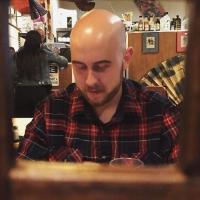The High Concept Of "A Quiet Place" And "A Quiet Place Part II" Make Them Two Of The Scariest Movies

Horror was a staple genre of the film industry before movies even had sound, and continues to be so to this day. Audiences continually flock to the theatres to be frightened, and filmmakers are constantly creating creatures and killers to do so. But whether the scares come from a were wold or an ax-murderer, all effective horror movies have a simple concept at their core: to have an effective scare, there must be a building of tension before it.
The tension, or suspense, before a scare builds and builds until finally it is released by the scare. This release of tension is the exact reason why audiences find horror enjoyable, and the best horror films know how to keep the tension throughout the movie.
Plenty of horror classics are held in high regard for this very reason. Jaws refrained from showing the shark in full until the end and established the water as a place that meant almost certain death. This combination of the elusive monster and the dangerous environment was a simple yet potent formula that kept the tension high throughout the film.
Silence of the Lambs builds up suspense in multiple ways. There is the race against the clock to catch the serial killer Buffalo Bill before he kills again. But there are also the meetings between Clarice Starling and Hannibal Lecter. In each meeting, they try to gain a position of power over the other through negotiation and physiological maneuvering, all the while the audience knows she is playing this game with a hyper-intelligent cannibalistic serial killer.
Both A Quiet Place and A Quiet Place Part II tend towards the simpler side of this mechanism’s use. But this simplicity is in no way a criticism of either films’ quality. The simplicity of the series’ concept and how it was used in the plots make both effective.
The concept of the series is: A family has to survive in a world after an alien invasion. But the aliens are impervious to weapons and will kill anything that makes a sound. So the family must live as quietly as possible.
Tension begins to build immediately in A Quite Place as the Abbott family scavenges a drug store for supplies. They walk barefoot to dampen the noise of their steps, the mother rolls pill bottles so the medicine inside doesn’t rattle when the youngest child knocks a toy off a shelf the eldest daughter slides to catch it before it hits the ground, and the family only communicates in sign language.
The bits of exposition are slim, the father explains a toy is too loud to the youngest, and outside a newspaper, the headline reads, “It’s sound”. But the message is clear, the family avoids making any noise that isn’t completely necessary. For the entire opening scene, the loudest sounds the audience hears are footsteps on the sand, the rustle of leaves, and ambient noise that would otherwise be drowned out by even a normal conversation. This atmosphere combined with the actions of the characters creates an expectation for quiet.
But as the family walks across a bridge, the youngest child presses a button on the toy he isn’t supposed to have and the quiet atmosphere is broken. The father dashes towards his son, the mother, and daughter hold their hands to their mouths and silently scream. The camera cuts to the woods where something is approaching, then to the little boy holding his toy. Then a creature leaps from the woods obliterating the child in front of the family who stare bewildered and silent.
The first scene in the second movie serves a very similar purpose while also giving background on how the aliens got to earth. On a seemingly ordinary day in the small town where the Abbott family and other townsfolk are going about their lives when a massive asteroid is seen falling from the sky. It crashes miles away from the town but soon the aliens, called death angels are causing death and destruction seemingly everywhere. In this scene, we are with the family as they learn that it is sound that triggers the creatures to attack. Every instance in which they narrowly escape establishes the formula from the previous movie, making noise will cause your death.
The brilliance of this scene is that it gives a background for the death angles who were otherwise a mystery in the first movie. But it also establishes the premise for anyone who hadn’t seen the first movie, without boring returning audiences with expedition they already know.
From these scenes, each movie delivers on rising tension and scares in a way that is formulaic while never becoming tired. This is because the situations in which danger can arise are so numerous. A small accident like knocking something over alerts the monsters, stepping off of the sand trail the family uses to move silently can mean death, and even running from danger means almost certain death.
In the second movie, the addition of an infant forces the family to keep the child in an oxygenated box to muffle the infant’s cries. This necessity created by the dangers of sound adds another necessity, oxygen tanks. This new necessity is then used in already tense situations, acting as a timer on the encounters with the death angelsThe way that every aspect of the movie always comes back to relate to the core premise is what makes both A Quiet Place and A Quiet Place Part II high concept movies.
High-concept filmmaking is a vague term but means that a film possesses an easily communicable premise. For A Quiet Place and A Quiet Place Part II, this premise is the same mechanism that creates tension: a family attempts to survive in a world where making a sound leads to death.
Beyond the mechanism of suspense and terror, the high concept premise is also used for characterization. The best example of this characterization is in the first movie when the two surviving children are playing a game of monopoly. Instead of the usual noisy metal and plastic pieces, the mother has made soft cloth pieces for them to use. This attention to detail shows that the parents are dedicated to providing as close to normal of a childhood as possible for their children even in such dire times.
This characterization extends to nearly all main characters in the films. The children are shown to genuinely care for their family as well, and all members of the family show resourcefulness, bravery, and determination. By characterizing the characters, something that often lacks in horror movies, the film enhances the threats of the world. Because when a character steps on a leaf and it crunches, the threat isn’t to some generic character it is threatening a member of a family the audience has quickly learned to care for.
When all of the aspects come together they work to make two movies where there is rarely a moment of solace. From the beginning to the end of both films I found myself racked by the suspense of each film, enthralled in the well thought out world and analyzing every move of the characters paranoid at the sound any action might make. By the end of each movie, the triumph of the characters acts like one big scare, releasing a movie’s worth of tension and providing catharsis.
What these films show is just how powerful a high concept premise can be for a horror film. Although simple, these kinds of premises provide a strong framework to use the core mechanism of horror to great effect. When thought out they can add originality and subtle traits to a plot and characters that in turn reinforce the building cycle of suspense and scares. By the end, an audience receives a lean film that never lets go of their attention and keeps them on the edge of their seats.
Opinions and Perspectives
I think these films work so well because the threat is constant. There's no safe moment
The movies made excellent use of perspective shots to build suspense
What impressed me most was how they maintained the tension even when you knew what was coming
I found the second film's multiple storylines harder to follow than the focused narrative of the first
Both movies did an amazing job of making everyday sounds feel threatening
The use of sand paths and newspapers to muffle footsteps was such a clever detail
I actually found myself getting annoyed at how careless some characters were with sound
The acting had to be so subtle because they couldn't rely on dialogue. Really impressive performances
Not sure I agree about the high concept making it scarier. Simple doesn't always mean better
The fireworks distraction was such a smart solution. It showed how sound could be used as a weapon too
I loved how they showed the family adapting to their new reality with all those clever survival techniques
These movies really shine in showing rather than telling. We learn everything we need through actions
The waterfall scene actually answered that. Loud constant sounds mask other noises
I wonder how they would handle rain in this world. That's one thing that always bothered me
I found myself holding my breath during so many scenes without even realizing it
The death angels are some of the most uniquely designed movie monsters I've seen in years
My heart was racing through both movies. The constant threat of sound made every scene intense
I appreciate how both films avoided cheap jump scares and relied on genuine tension
You're missing the point about the sequel. It expanded the world while keeping the core concept intact
The way they portrayed sign language was really well done. It felt natural rather than forced like in some other movies
I actually think the first movie would have been better as a standalone. The sequel felt unnecessary to me
The sound design deserves an award. I've never been so aware of every tiny noise in a movie before
These movies made me realize how noisy my everyday life is. I caught myself being extra quiet for days after watching them
The newspaper headline It's sound was such an effective way to explain everything without lengthy exposition
Anyone else notice how they barely needed dialogue to tell the story? The visual storytelling was incredible
What really got me was how they had to walk on sand paths everywhere. I kept thinking about how much planning went into every single step
I disagree about the sequel being disappointing. The oxygen tank timer added a whole new layer of tension I didn't expect
The infant subplot stressed me out so much. I kept thinking about how impossible it would be to keep a baby quiet in that situation
Personally, I think the opening scene of Part II is one of the best horror sequences I've ever watched. Seeing how it all started was terrifying
I actually found the sequel disappointing. The first one had such a unique feel, but the second just felt like another monster movie to me
The part with the monopoly game using cloth pieces really hit me hard. Such a small detail that shows so much about the parents' love
I love how these movies completely reinvented the way silence is used in horror. The concept of sound itself being deadly is brilliant
